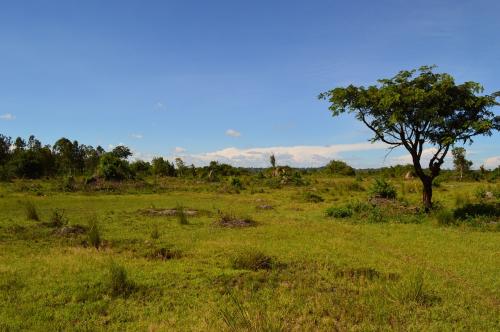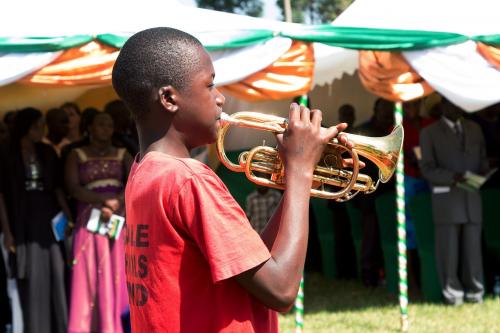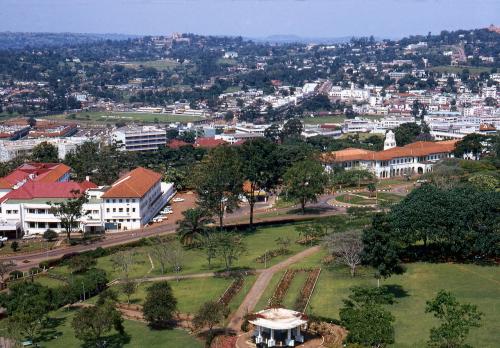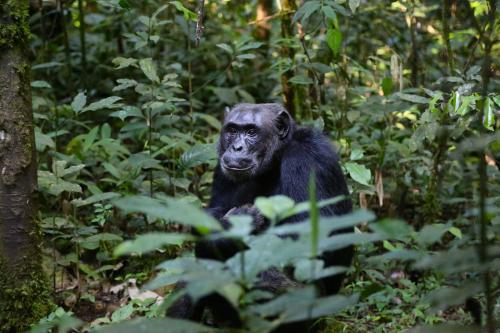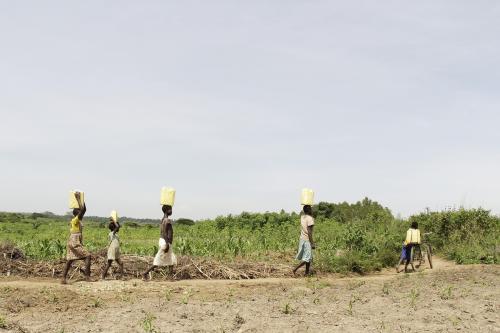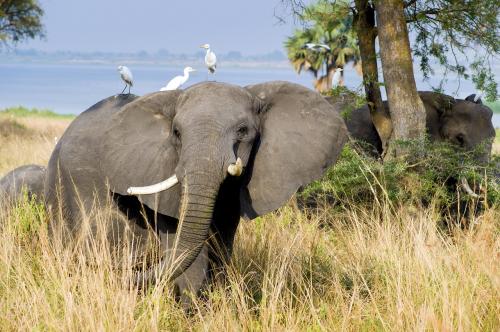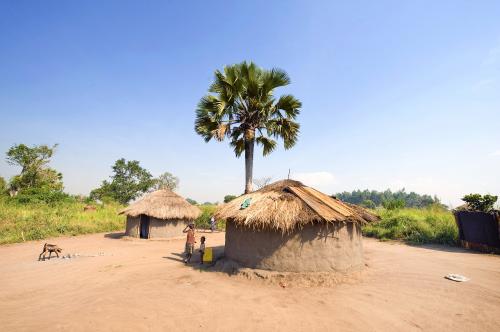Seasons in Uganda
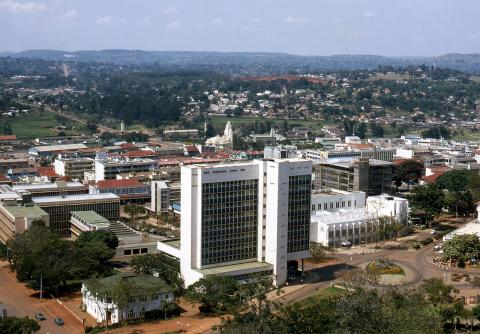
The country is located near to equator however there’s no excessive heat. The climate is softened by relatively high altitude and influence of big bodies of water. Thus annual range of temperatures is narrow. Averages of January, the warmest month, are 17 °C to 24 °C (63-75 °F) while at July temperature hovers between 16 °C and 21 °C (61-70 °F). In alpine regions winter temperatures may go below 0 °C (32 °F). Highest mountains have ice caps.
There are two rainy seasons in Uganda. First one lasts from April to May and span of second is at first two autumn months. In northern regions there’s no gap between two seasons and they are combined in one long wet period between April and October. Average amount of precipitation is 1000 to 1200 mm (39.3-47.2”) except coasts of Lake Victoria where it reaches 1600 mm (63”).
Seasons
Contents:
March-May in Uganda
At spring Uganda is flooded by tropical rains. Amount of precipitation grows from March to May. Local showers are heavy and fast. Averages of March are about 24 °C and at following two months temperature rises to 27-28 °C (80-82 °F). There are no sharp shifts of temperature no to mention frosts (except alpine regions).
Crescent-shaped lands on coast of Lake Victoria are especially rainy. Day usually begins with and torrential rains are occurring after noon. Kampala, the capital of Uganda, bears absolute African record with 242 days of precipitation per year. At rainy season Lake Victoria is wavy and its water temperature varies from 25 °C (77 °F) at March to 23 °C (73 °F) at May.
Climate from March to May
| March Max average t°: +28 °C (82 °F) Min average t°: +17 °C (62 °F) Rainy days: 4 days Precipitation: 135 mm (5.3") |
| April Max average t°: +26 °C (80 °F) Min average t°: +17 °C (62 °F) Rainy days: 5 days Precipitation: 180 mm (7.1") |
| May Max average t°: +26 °C (78 °F) Min average t°: +16.5 °C (61 °F) Rainy days: 4 days Precipitation: 133 mm (5.2") |
(Kampala)
Holidays
Easter celebrations with variable dates at March-April.
March 8 – Women's Day.
May 1 – Labour Day.
June-August in Uganda
The country is located in South Hemisphere thus local summer is winter in term of weather. As much as 25 °C (77 °F) of average temperature can be considered as winter however daily shifts of temperature are significant. I.e. in plateaus nighttime temperature drops to 10 °C (55 °F) while in highlands it may reach even 5 °C (41 °F). In Ruwenzori Mountains at 2000 m (6600 ft.) a.s.l. air often cools down below 0 °C (32 °F). Higher at 3500 m (11500 ft.) a.s.l. snow falls and stays for quite long. Highest peaks are cowered with snow caps. Overall there are about 40 moderate glaciers.
At July, the coldest month of a year, averages are dropping to 21 °C (70 °F) with respective cooling at night. At June and July rains are calming down. In south-western regions amount of monthly precipitation even drops to 20 mm (0.7”). Summer is the best time to visit the country.
Climate from June to August
| June Max average t°: +26 °C (78 °F) Min average t°: +16 °C (60 °F) Rainy days: 2 days Precipitation: 72 mm (2.8") |
| July Max average t°: +25 °C (77 °F) Min average t°: +15 °C (59 °F) Rainy days: 3 days Precipitation: 62 mm (2.4") |
| August Max average t°: +26 °C (78 °F) Min average t°: +15 °C (59 °F) Rainy days: 3 days Precipitation: 85 mm (3.4") |
(Kampala)
Holidays
June 3 – Martyr's Day.
June 9 – National Heroes Day.
September-November in Uganda
Ugandan autumn is the “time of lesser rains”. Temperature is bit higher than it was at summer yet showers are almost daily. Overall amount precipitation is fewer and frequent showers are frequent but less intense. Daytime temperature averages of this season are between 25 and 27 °C (77-81 °F) and at night air cools down to 18 °C (64 °F).
In general autumn isn’t best time to visit the country of forty reserves first of all because of abundant precipitation. Summer is drier and more comfortable. Slopes of Ruwenzori Mountains, coasts of Lake Victoria and western plateaus are having more precipitation comparing to other regions of the country.
Climate from September to November
| September Max average t°: +26.5 °C (80 °F) Min average t°: +15.5 °C (60 °F) Rainy days: 5 days Precipitation: 109 mm (4.3") |
| October Max average t°: +27 °C (81 °F) Min average t°: 16 °C (61 °F) Rainy days: 5 days Precipitation: 133 mm (5.2") |
| November Max average t°: +27 °C (81 °F) Min average t°: +16 °C (61 °F) Rainy days: 5 days Precipitation: 153 mm (6.0") |
(Kampala)
Holidays
October 9 – Independence Day.
December-February in Uganda
Winter is the hottest season in Uganda with average temperature of 29 °C. North-eastern regions are warmer with 30 °C of average temperature. Yet despite hot days nights are cool in whole country. Nighttime averages are between 17 and 20 °C and in lake coasts it is even cooler. Such difference caused by mountains and altitude zonality of weather.
January is considered as the hottest month when average temperature is higher by 2-3 °C. In addition along with February it is the driest time of a year with lowest probability of rains. North-eastern savannahs and semi-deserts have drier climate and occasional droughts.
Climate from December to February
| December Max average t°: +27 °C (81 °F) Min average t°: +16 °C (61 °F) Rainy days: 3 days Precipitation: 93 mm (3.7") |
| January Max average t°: +28 °C (83 °F) Min average t°: +16 °C (61 °F) Rainy days: 2 days Precipitation: 64 mm (2.5") |
| February Max average t°: +28 °C (83 °F) Min average t°: +16 °C (61 °F) Rainy days: 4 days Precipitation: 74 mm (2.9") |
(Kampala)
Holidays
December 25 – Christmas Day.
December 26 – Boxing Day.
January 1 – New Year's Day.
February 16 – Archbishop Janani Luwum Day.
 Seasons of the Year
Seasons of the Year 